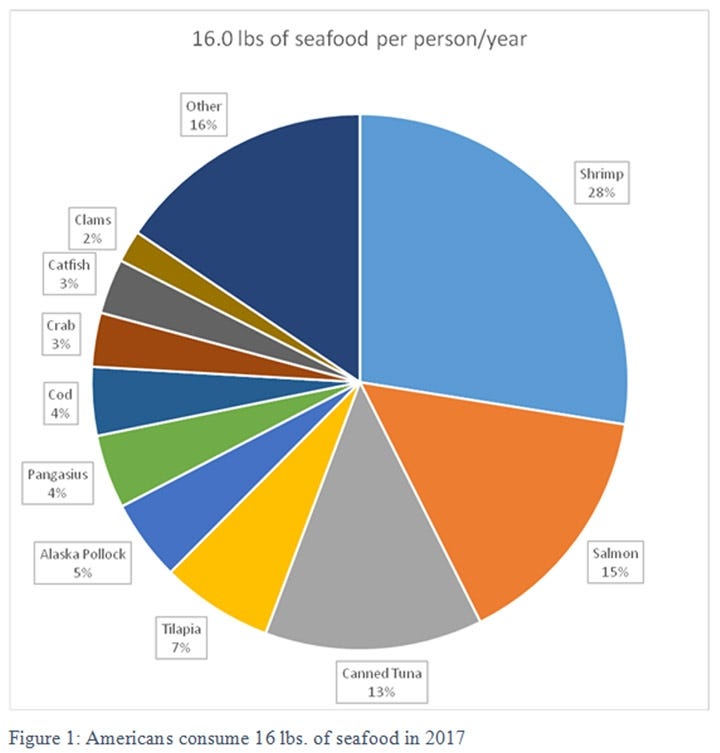![Here's how the amount of seafood a person eats per year breaks down, according information from the National Oceanic and Atmospheric Administration. [SPECIAL TO THE NEWS BULLETIN]](http://127.0.0.1/wordpress/wp-content/uploads/2022/01/ghows-DA-7e53f5ce-e9f2-52d9-e053-0100007f43fa-908fd8ae.jpeg)
I don’t know about you, but I’m definitely above average — when it comes to seafood consumption, that is.
The National Oceanic and Atmospheric Administration released its annual report earlier this month which found that seafood consumption in the United States increased in 2017. The report notes that the average American ate 16.0 pounds of fish and shellfish in 2017, up 1.1 pounds from the year before.
This is a significant increase and great news for both seafood producers and consumers. The American Heart Foundation recommends eating fish (particularly fatty fish rich in omega-3s) two times per week. We currently only consume about half of that.
This recommendation includes a variety of farm-raised and wild-caught fish. Both are crucial to meet current and future demand for seafood and omega-3 fatty acids. Increase seafood consumption has many health benefits, including:
•reduced risk of heart attacks and strokes.
•reduced decline in brain function in old age.
•can be beneficial against depression.
•reduced risk of Type 1 diabetes and several other autoimmune diseases.
•lower risk of developing macular degeneration, a leading cause of vision impairment and blindness.
•may lead to improved sleep.
Those are a lot of good reasons to increase your seafood consumption.
In addition to consuming more seafood, consumers are consuming more variety. While the top 10 consumed seafood species remained relatively unchanged, they now only account for 84 percent of total consumption, with less popular species gaining acceptance.
This year shrimp once again topped the list, jumping three-tenths of a pound in 2016 to 4.4 pounds in 2017. Salmon, up from 2016 by more than two-tenths of a pound at 2.41 pounds, claimed the second slot, with canned tuna, at 2.1 pounds, coming in third.
Experts attribute this increase in consumption follows higher domestic landings and more globally sourced product. Both are great news for American jobs and American health.
Source: http://www.noaa.gov/media-release/american-seafood-industry-steadily-increases-its-footprint, Dec. 13, 2018.
Laura Tiu is an agent at the University of Florida's Institute of Food and Agricultural Sciences Extension office in Crestview.

This article originally appeared on Crestview News Bulletin: Are you above average when it comes to seafood?
